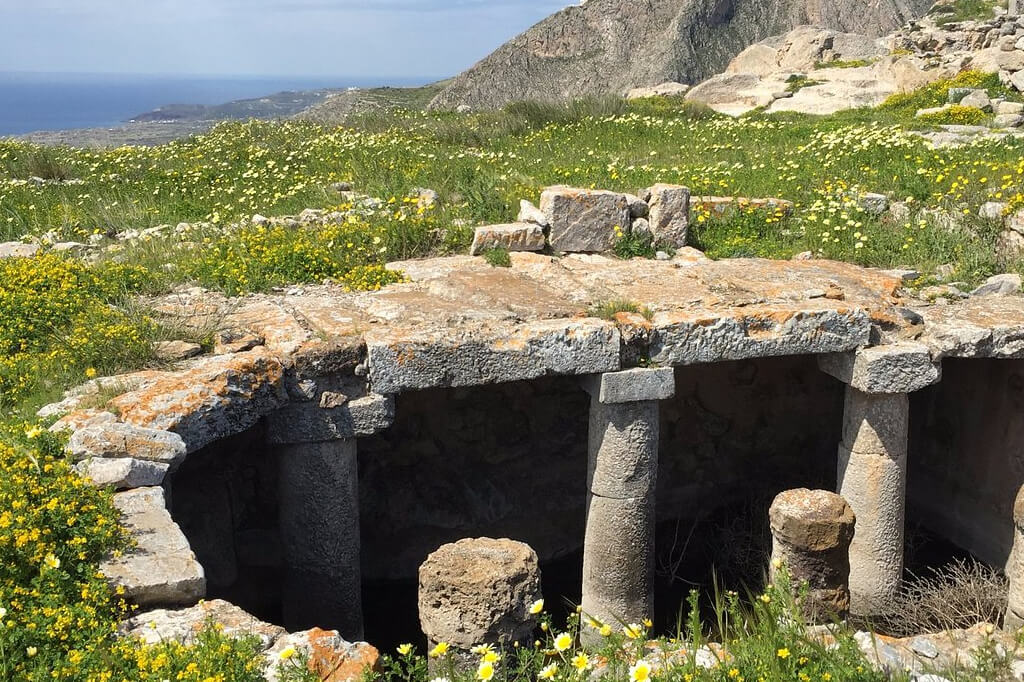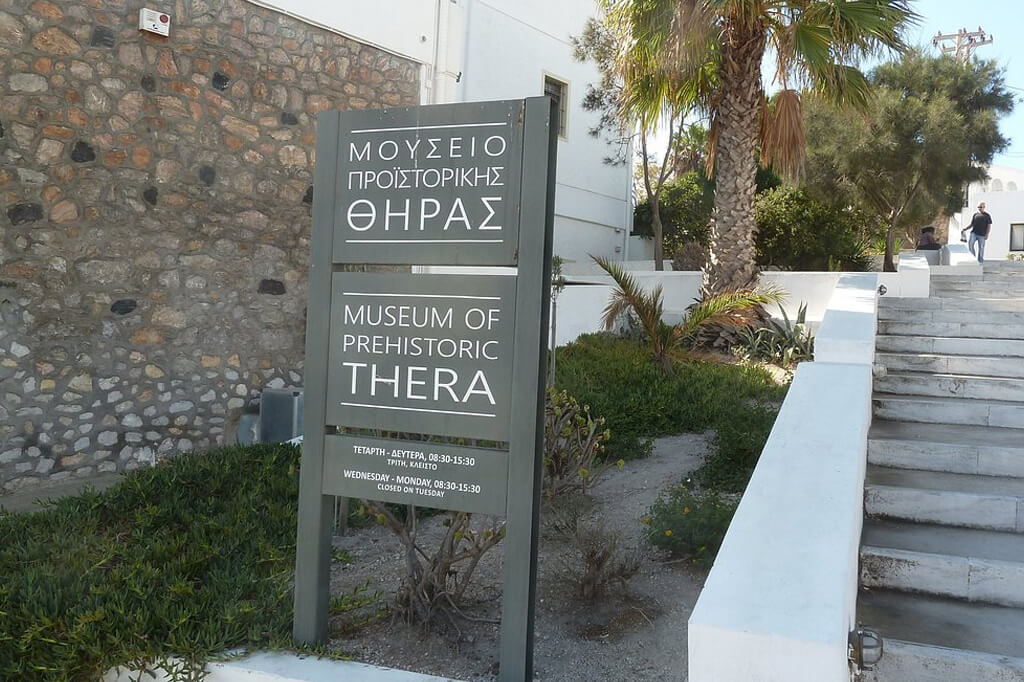Santorini, an island renowned for its breathtaking sunsets and iconic caldera views, also boasts a rich tapestry of history and culture. Dotting its landscape are remnants of medieval castles, silent witnesses to the island’s turbulent past.
These fortresses, primarily in Oia, Pyrgos, and Emporio, were built as a defense against pirates and invaders, and today, they offer panoramic vistas of the Aegean. Complementing these historical edifices are Santorini’s museums, which house treasures from various epochs.
Together, the castles and museums of Santorini provide a deep dive into the island’s layered past, offering visitors a holistic experience beyond its natural beauty.

Castles
Santorini, with its rich history, has several castle ruins that bear witness to the island’s past, especially during the times when it faced threats from pirates and needed fortifications for protection. Here are some of the notable castles and fortresses on the island
- Oia Castle (Fortress of Agios Nikolaos): Located in the picturesque village of Oia, this castle offers one of the best spots to watch the famous Santorini sunset. While much of the castle has crumbled, its remnants provide a glimpse into the island’s medieval past.
- Akrotiri Castle (Goulas of Akrotiri): Found in the village of Akrotiri, this castle was primarily used as a watchtower and a refuge against pirate attacks. The village of Akrotiri is also famous for the ancient Minoan settlement that was preserved under volcanic ash.
- Emporio Castle (Castle of Nimborio): Located in the village of Emporio, this castle is intertwined with the village’s houses, creating a fortified area. Visitors can wander through the narrow streets and explore the various chapels and structures within the castle’s vicinity.
- Kasteli of Agios Nikolaos in Kamari: This is an ancient fortified area located near the modern-day village of Kamari. While not a castle in the traditional sense, it’s an archaeological site that provides insights into Santorini’s ancient history.
- Skaros Rock in Imerovigli: This was one of the most important fortresses on the island. Today, visitors can hike up to Skaros Rock and explore the ruins while enjoying panoramic views of the caldera.
- Pyrgos Castle: Located in the village of Pyrgos, this castle is surrounded by medieval pathways and houses. The village itself is a maze of narrow streets, and the castle offers a panoramic view of the entire island.
When visiting these castles, it’s essential to remember that many are in ruins due to the passage of time, earthquakes, and other factors. However, they offer a unique perspective into Santorini’s history and provide some of the best vantage points for views of the island and the Aegean Sea.

Museum
Santorini boasts a rich history that spans thousands of years, and its museums offer visitors a chance to delve into this past. Here are some of the notable museums on the island:
- Archaeological Museum of Thera: Located in Fira, this museum houses artifacts from the ancient city of Thera, including sculptures, inscriptions, and pottery from the Archaic to the Roman period.
- Museum of Prehistoric Thera: Also in Fira, this museum showcases findings from the prehistoric city of Akrotiri, which was buried under volcanic ash around 1600 BC. Highlights include frescoes, pottery, and tools that provide insights into the Minoan civilization.
- Ancient Thera: While not a traditional museum, the ancient city of Thera, located on Mesa Vouno mountain between Kamari and Perissa, offers ruins from Hellenistic, Roman, and Byzantine periods. It’s an open-air archaeological site with temples, agoras, and other ancient structures.
- Akrotiri Archaeological Site: One of the most significant archaeological sites in the Aegean, Akrotiri is a Minoan Bronze Age settlement that was preserved under volcanic ash. The site offers a glimpse into the life of its inhabitants before the catastrophic eruption.
- Naval Maritime Museum: Located in Oia, this museum is housed in a 19th-century mansion and showcases Santorini’s maritime history, including ship models, marine equipment, and photographs.
- Wine Museum Koutsoyannopoulos: Situated in a natural cave in Vothonas, this museum traces the history of wine-making in Santorini over the past 3,000 years. It offers a unique underground setting with life-sized dioramas and ends with a wine tasting session.
- Santorini Arts Factory: Located in Vlychada, this museum is dedicated to the island’s tomato processing history. It’s set in a former tomato factory and showcases the industrial heritage of Santorini.
- Folklore Museum: Situated in Kontochori, near Fira, this museum is housed in a cave and offers a glimpse into traditional Santorinian life, including a winery, workshops, and a chapel.
- Emmanuel A. Lignos Folklore Museum: Located in Karterados, this museum displays a collection of artifacts from daily life in Santorini, including tools, furniture, and traditional costumes.
- Icon and Relics Collection of Pyrgos: Housed in the church of Holy Trinity in Pyrgos, this collection includes religious icons, relics, and other ecclesiastical items.
When planning a visit to Santorini’s museums, it’s a good idea to check their opening hours, as some may have seasonal schedules or be closed on specific days.
